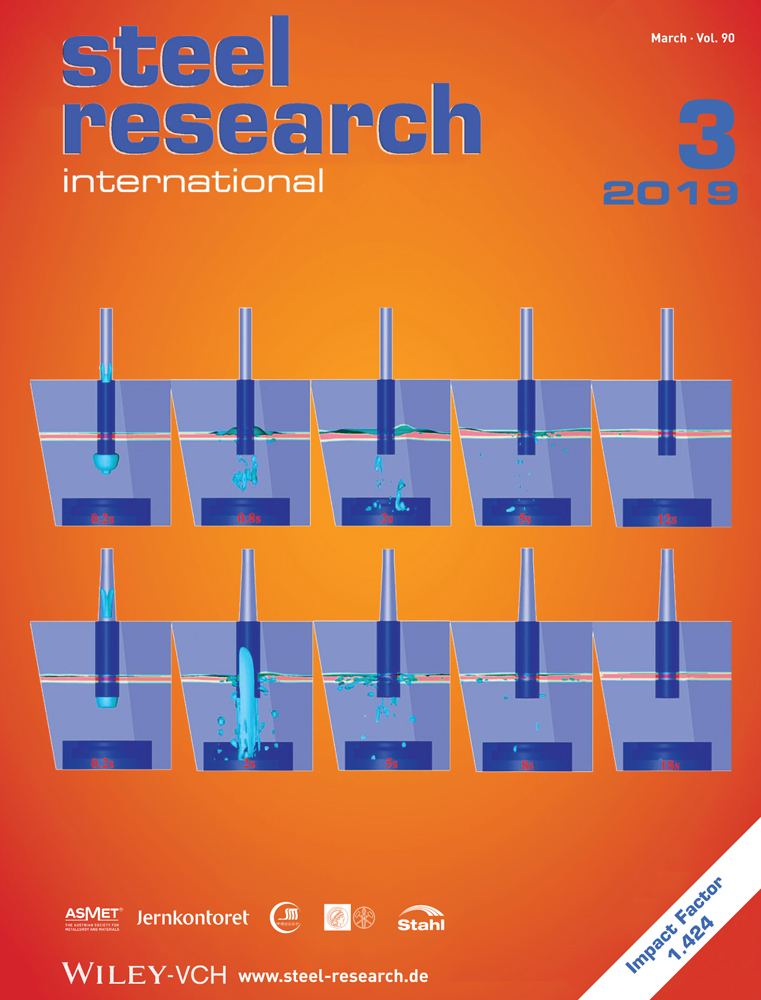High Efficiency Dephosphorization by Mixed Injection during Steelmaking Process
Abstract
A new dephosphorization technology with introduction of partial CO2 into O2 is proposed in this paper. Thermodynamic characteristics and dephosphorization mechanism by introduction of CO2 are analyzed and the results show that using CO2 as partial dephosphorization oxidant can change the selective oxidation condition of steelmaking system, control the temperature of bath, strengthen the stirring ability, and finally obtain a high efficiency of dephosphorization. Meanwhile, the relationship between selective oxidation temperature T of C and P, partial pressure of CO gas, slag activity, and compositions of melt is obtained as follows. Furthermore, dephosphorization trails are carried out in a 30t steelmaking converter and a 300t special dephosphorization converter, respectively. It is concluded that the new technology of injecting CO2–O2 mixture is beneficial to reduce phosphorus content in liquid steel, increase the partition ratio of phosphorus, and reduce iron loss of slag.
Conflict of Interest
The authors declare no conflict of interest.




